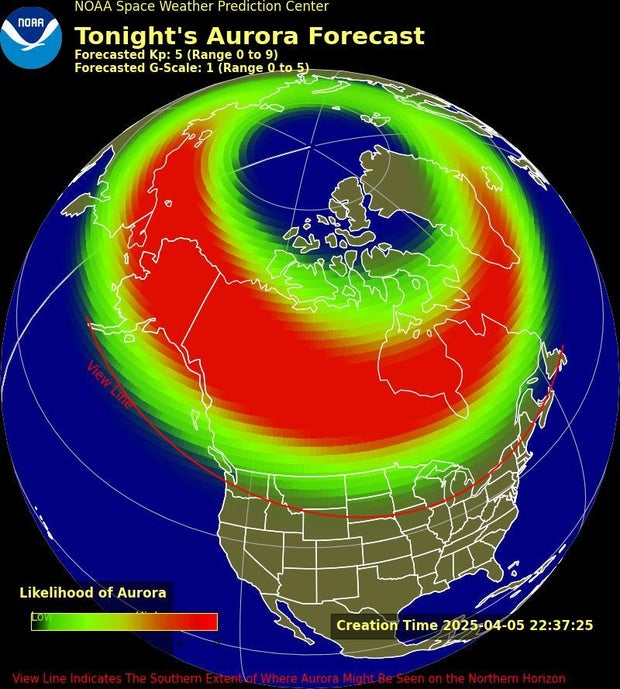Geomagnetic Storms Enhance Northern Lights Visibility Across U.S.
On the evening of April 5, 2025, several states in the northern United States may witness the mesmerizing phenomenon of the northern lights, thanks to forecasted geomagnetic storm conditions. The National Oceanic and Atmospheric Administration (NOAA) has issued a watch for a G2 storm, the second-lowest category on the geomagnetic storm scale extending from G1 to G5.
Storm Forecast and Affected Regions
The NOAA’s Space Weather Prediction Center anticipates that the G2 storm conditions will prevail from 3:32 p.m. EDT until approximately 10 p.m. EDT, affecting areas from New York through Wisconsin and into Washington state.
- G2 Storm Forecast: April 5, 3:32 p.m. – 10 p.m. EDT
- Regions Affected: New York, Wisconsin, Washington State
Additionally, a G1 storm alert has been issued for places including northern Michigan and Maine for the same period.
Recent Visibility of the Aurora Borealis
Just a day prior, during the night of April 4, portions of the western United States, including Washington, Idaho, Montana, Wyoming, North and South Dakota, reported clear viewings of the northern lights, also known as the aurora borealis.

Understanding the Aurora Borealis
The aurora borealis is created when charged particles collide with molecules in Earth’s upper atmosphere, leading to bursts of energy that manifest as colorful light displays. These events are influenced by solar activity, which can lead to varying visibility levels based on geomagnetic storms.
Past Events and Recent Trends
NOAA reported a significant G5 geomagnetic storm event in May 2024, which marked one of the strongest ratings in years. This past event allowed millions across the U.S., Canada, Europe, and parts of Asia to enjoy spectacular views of the northern lights.
This Saturday’s expected geomagnetic activity presents an exciting opportunity for sky watchers to experience the stunning beauty of the northern lights, further contributing to public interest in this natural spectacle.

